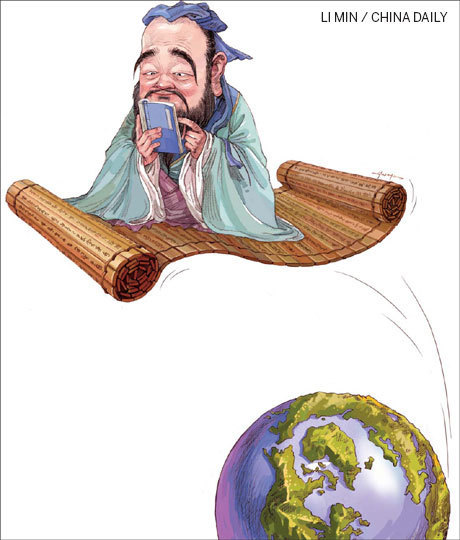
 'Taken 2' grabs movie box office crown
'Taken 2' grabs movie box office crown
 Rihanna's 'Diamonds' tops UK pop chart
Rihanna's 'Diamonds' tops UK pop chart
 Fans get look at vintage Rolling Stones
Fans get look at vintage Rolling Stones
 Celebrities attend Power of Women event
Celebrities attend Power of Women event
 Ang Lee breaks 'every rule' to make unlikely new Life of Pi film
Ang Lee breaks 'every rule' to make unlikely new Life of Pi film
 Rihanna almost thrown out of nightclub
Rihanna almost thrown out of nightclub
 'Dark Knight' wins weekend box office
'Dark Knight' wins weekend box office
 'Total Recall' stars gather in Beverly Hills
'Total Recall' stars gather in Beverly Hills
Journey to the West
Updated: 2012-08-28 09:46
By Yang Guang (China Daily)
|
||||||||

The country's publishing industry is starting to see returns from its near 10-year going global campaign, according to Yang Guang.
It's been 2,000 years since papermaking was developed in China and spread to the rest of the world through the Silk Road, and 1,000 years or so for movable type printing.
The Chinese publishing industry, however, has been engaged in an ongoing global campaign for less than a decade.
Considerable achievements have been accomplished though, especially after the initiation of the China Book International project in 2006.
Launched by the State Council Information Office and the General Administration of Press and Publication, China Book International aims to facilitate the overseas publication of Chinese books through providing funds for translation. To date, it has supported the publication of 2,156 books in 33 languages, and in 54 countries and regions.
With the 19th Beijing International Book Fair (BIBF) opening on Wednesday, Chinese publishers are braced to take advantage of this platform and take part in new exchanges with their international counterparts.
Related: Captivating characters
Hou Hui, director of Foreign Languages Teaching and Research Press' (FLTRP) international division, emphasizes the importance of the annual BIBF for her.
"Each year, we will make full use of the fair to exchange ideas face-to-face with our international partners and many of our co-publishing projects started this way," she says.
During this year's BIBF, FLTRP will cooperate with Germany's Springer in launching an English-language China Academic Library, a project to publish classical academic works by top Chinese scholars. The first batch of titles to emerge includes works from the sociologist and anthropologist Fei Xiaotong, historical geographer Hou Renzhi and economist Li Yining.
Since China started translating foreign literature a century ago, it has predominantly been a one-way street. But the situation has begun to change.
Most Viewed
Editor's Picks

|

|

|

|

|

|
Today's Top News
Health new priority for quake zone
Xi meets US top military officer
Japan's boats driven out of Diaoyu
China mulls online shopping legislation
Bird flu death toll rises to 22
Putin appoints new ambassador to China
Japanese ships blocked from Diaoyu Islands
Inspired by Guan, more Chinese pick up golf
US Weekly

|

|






